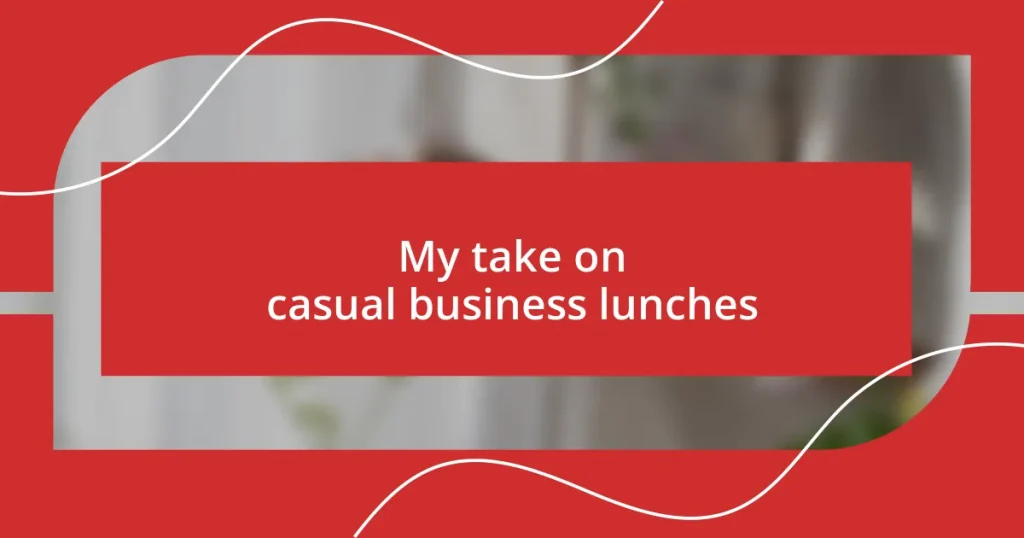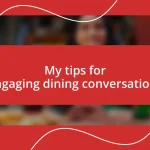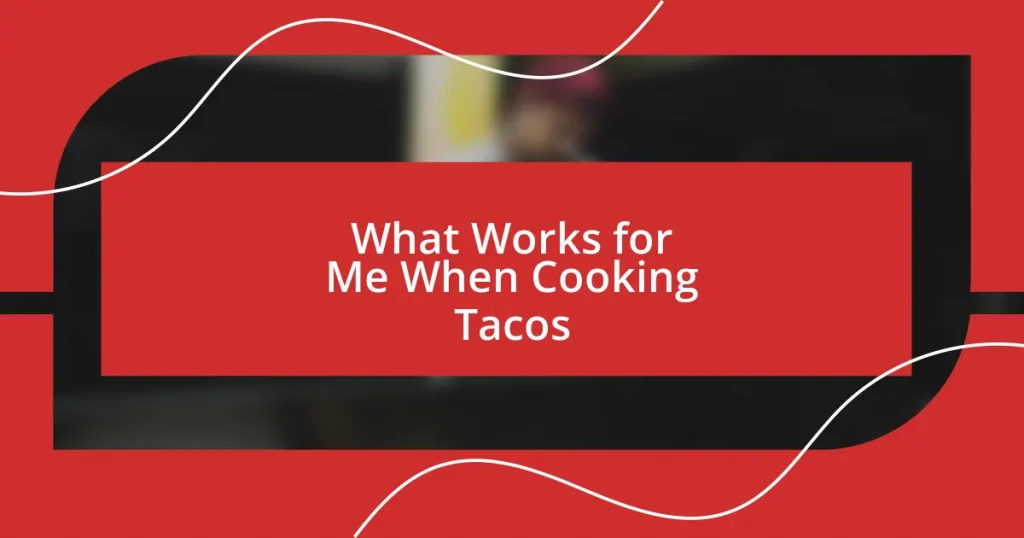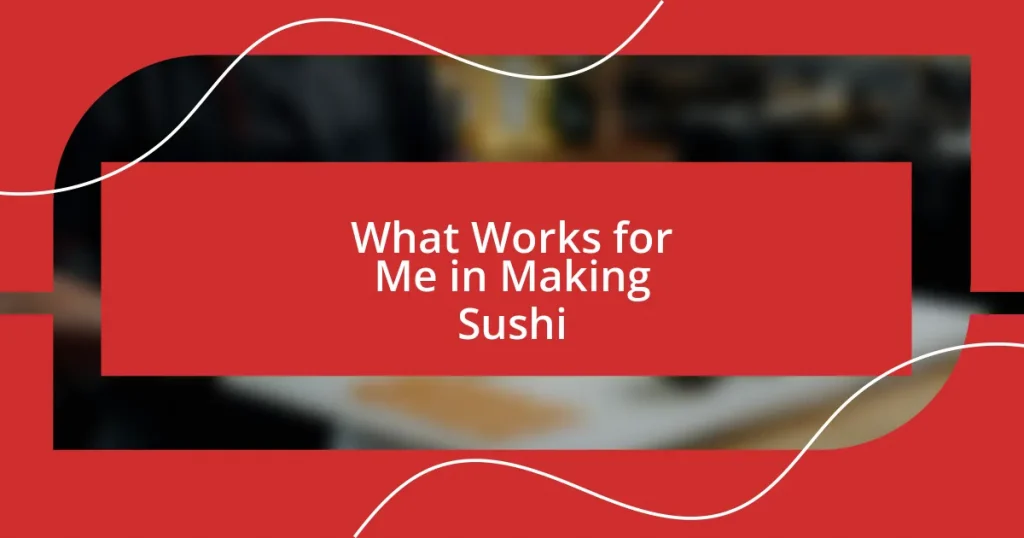Key takeaways:
- Casual business lunches create a relaxed atmosphere that fosters trust, open dialogue, and long-term relationships.
- The choice of venue and menu significantly impacts the lunch experience, setting the tone for meaningful interactions.
- Effective conversation strategies, such as asking personal questions and being genuinely curious, enhance engagement and collaboration.
- Follow-up communication is essential for solidifying connections, emphasizing gratitude and referencing specific discussions from the lunch.
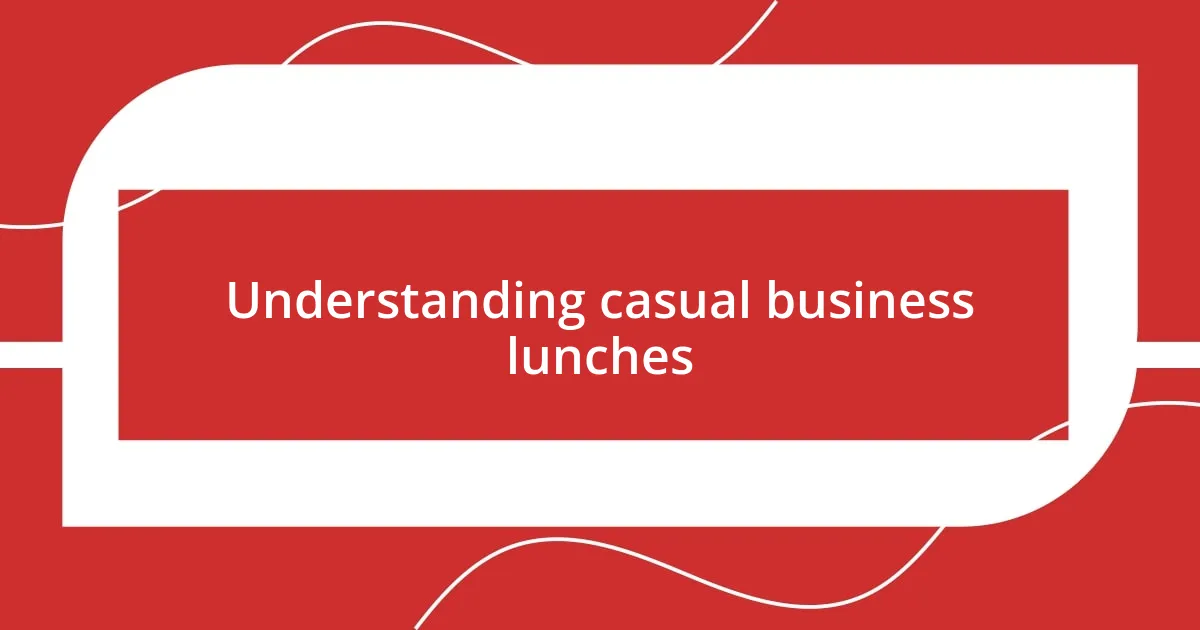
Understanding casual business lunches
Casual business lunches serve as a unique blend of professionalism and comfort, allowing individuals to build rapport without the constraints of a formal setting. I remember a time when I was nervous about meeting a potential client in a relaxed café instead of a boardroom. However, the conversation flowed freely over a shared plate of appetizers, and we connected in a way that felt genuine.
The atmosphere during these lunches can create an environment ripe for open communication and collaboration. Have you ever noticed how a good meal can relax the mind? I often find that when I sit down with colleagues or clients in a casual atmosphere, ideas seem to emerge more naturally, and barriers dissolve. It transforms discussions from stiff presentations to meaningful exchanges that often lead to innovative solutions.
Moreover, the choice of lunch venue can subtly reflect your understanding of the business dynamics at play. For instance, opting for a cozy, local spot can signal a preference for authenticity and community engagement. It’s these little nuances that can tell a story about who you are and how you approach business relationships. Every shared meal has the potential to deepen connections and pave the way for future collaborations.
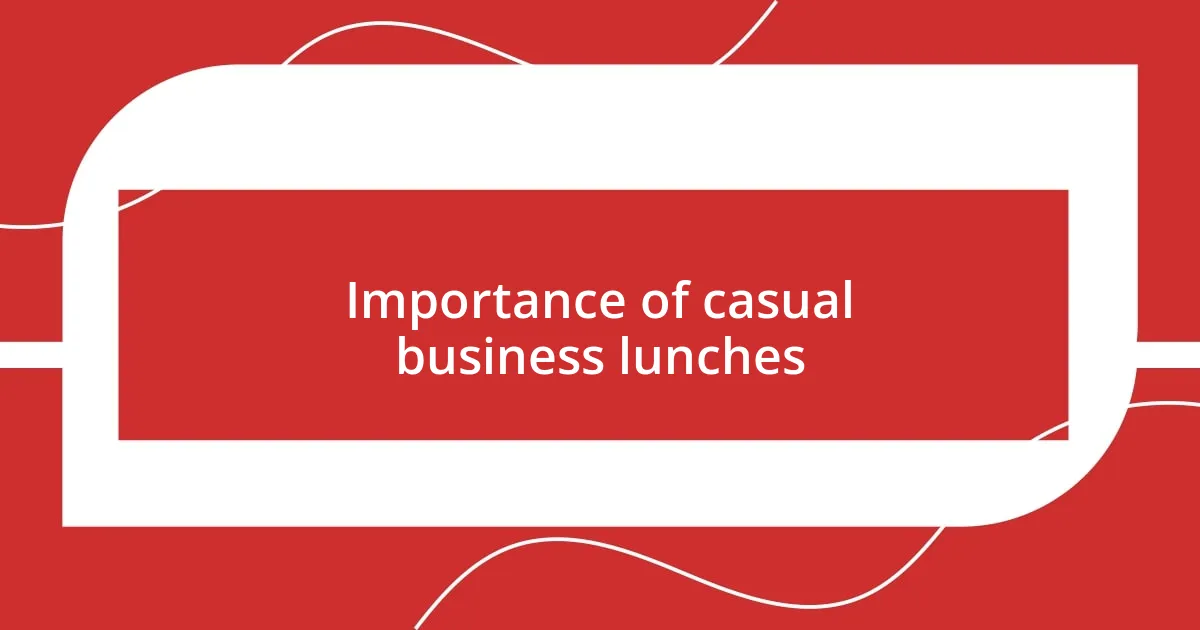
Importance of casual business lunches
When it comes to the importance of casual business lunches, I truly believe they are more than just a meal—they’re a strategic investment in relationship-building. I recall a lunch where I not only discussed project details with a colleague but also discovered her passion for photography. That conversation unexpectedly led to a successful collaboration outside our usual work projects. It’s moments like those that show how casual settings can foster richer exchanges and strengthen bonds in ways that traditional meetings often can’t.
Here are a few key reasons why I see these lunches as essential:
- Fostering Trust: Sharing a meal can break down formal barriers, creating a more trustful atmosphere.
- Encouraging Open Dialogue: The relaxed setting often leads to more honest discussions, where ideas flow freely.
- Building Long-term Relationships: Casual interactions can create stronger connections that last beyond the business realm.
- Boosting Productivity: I’ve noticed that after a good lunch, my teammates and I return to work with renewed energy and creativity.
- Cultural Understanding: Dining together allows for cultural insights that can enhance collaboration in diverse teams.
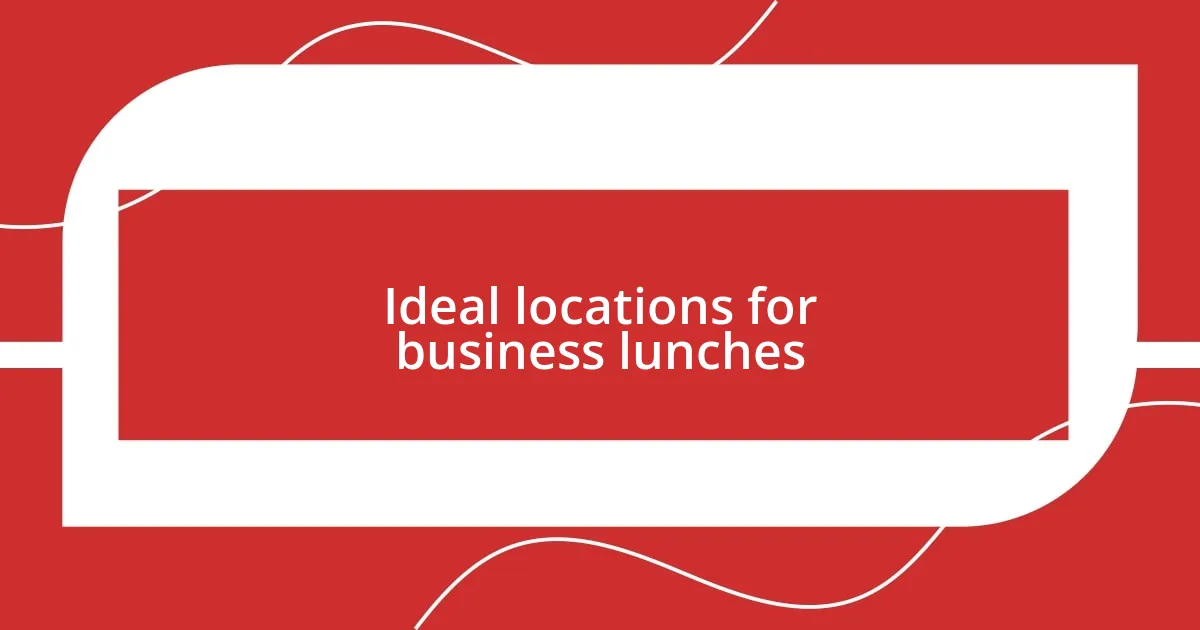
Ideal locations for business lunches
Finding the right location for a casual business lunch can be pivotal in setting the right tone for your meeting. Personally, I’ve always favored restaurants with outdoor seating. The fresh air and natural light seems to lift everyone’s spirits. I once had a lunch at a charming bistro with a patio, and the atmosphere lightened our discussion so much that we brainstormed ideas for a partnership that we never would have discussed in a stuffy conference room.
It’s essential to consider the ambiance of the venue, too. I remember selecting a sleek, modern café for a meeting with a tech startup. The minimalist décor projected innovation and creativity, aligning perfectly with the nature of our conversation. It’s fascinating how a location can harmonize with the topic at hand. For a meeting about traditional craftsmanship, choosing a rustic eatery would feel more authentic and engaging, while a vibrant food market could energize a discussion about a new business venture.
Finally, accessibility plays a huge role in the choice of location. I once hosted a lunch for a client who was unfamiliar with the city. We met at a well-known landmark restaurant, and it made a world of difference. Not only was it convenient for them, but it also gave us common ground to start our conversation. The unspoken agreement of having a shared experience—like enjoying a popular dish together—can create an instant connection.
| Location Type | Benefits |
|---|---|
| Cozy Café | Relaxing ambiance, promotes genuine conversation |
| Stylish Restaurant | Stylish setting can stimulate creative ideas |
| Outdoor Seating | Fresh atmosphere improves mood and collaboration |
| Historic Venue | Enhances authenticity and storytelling during discussions |
| Landmark Restaurant | Convenience and common ground establish immediate rapport |
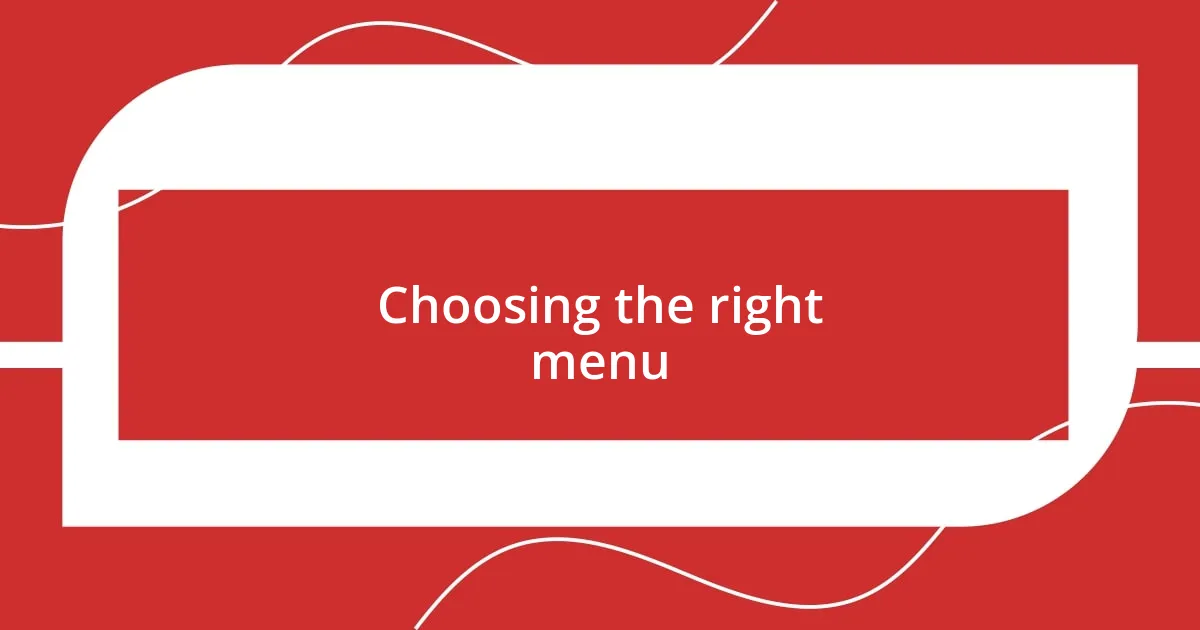
Choosing the right menu
Choosing the right menu can be a game changer during a casual business lunch. I remember one time, I opted for a tapas-style menu, allowing everyone to share various dishes. This not only sparked conversations about our food preferences but also encouraged a more collaborative atmosphere. It’s like breaking bread together fosters openness—what’s better than discussing ideas over delicious bites?
Consider the dietary preferences of your guests; this shows that you care and are attentive to their needs. I once learned that a colleague was vegan during a lunch, and I chose to order a colorful array of vegetable dishes. The gratitude on her face was palpable, and it opened up a discussion about sustainability in our industry that I hadn’t anticipated. Wouldn’t it be great if we all paid attention to such small details?
Also, think about the pace of the meal. A menu with lighter options can foster a quicker, more dynamic discussion, while a three-course meal invites a leisurely conversation. I attended a lunch where the main course was an elaborate feast, and while it was delightful, the lengthy service made it tough to keep the momentum going. Have you ever found yourself distracted by the wait rather than the conversation? That’s something to avoid!
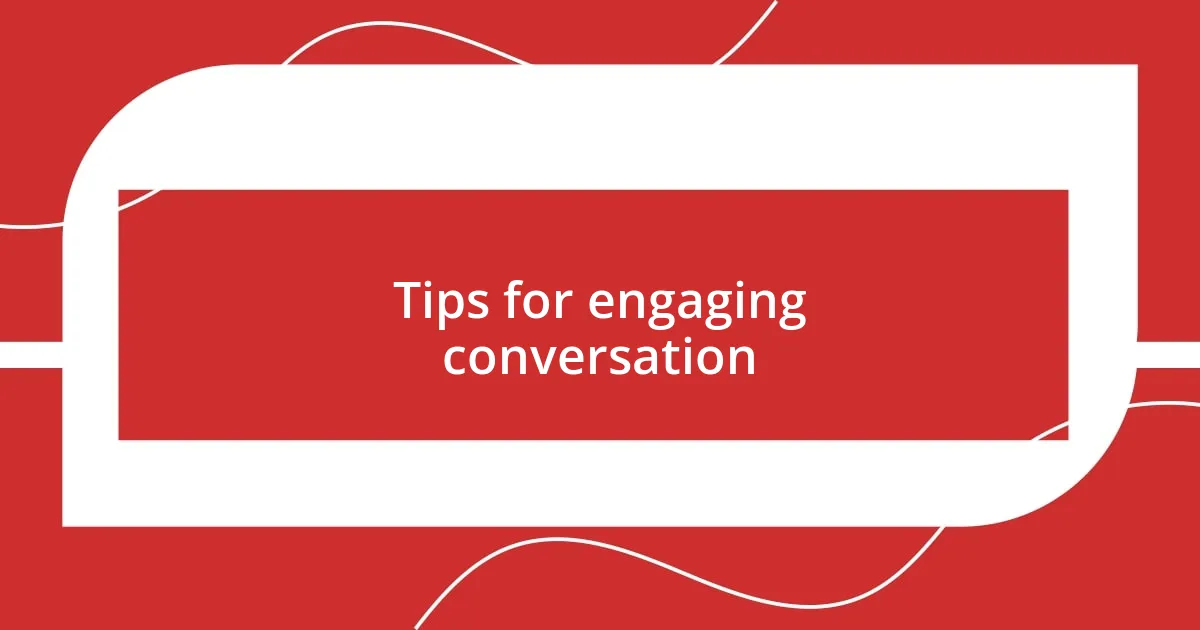
Tips for engaging conversation
Engaging conversation during a casual business lunch revolves around a few key strategies. I’ve found that starting with a light, personal question helps break the ice. For instance, I once asked a colleague about their favorite travel destination, and it opened a floodgate of shared experiences and laughter. This not only relaxed the atmosphere but also formed a bond that made discussing business feel more natural and enjoyable.
Another effective technique is to be genuinely curious about your conversation partner’s expertise. I remember a lunch where I asked an engineer about their latest project, and their eyes lit up as they explained the intricacies. It created an authentic connection, and I found myself learning so much more than if I had steered the conversation toward my own agenda. Have you ever noticed how people appreciate when you take an interest in their work? It can transform a simple lunch into a collaborative brainstorming session.
Lastly, pay attention to the flow of the conversation. If you sense a shift or a lull, don’t hesitate to switch topics. During one lunch, after discussing business for a while, I brought up a trending movie. It was interesting how effortlessly everyone transitioned to a passionate discussion about favorite films, making the tone lighter and refreshing. This change encouraged creativity when we returned to business topics, proving how a well-timed pivot can reinvigorate the conversation.
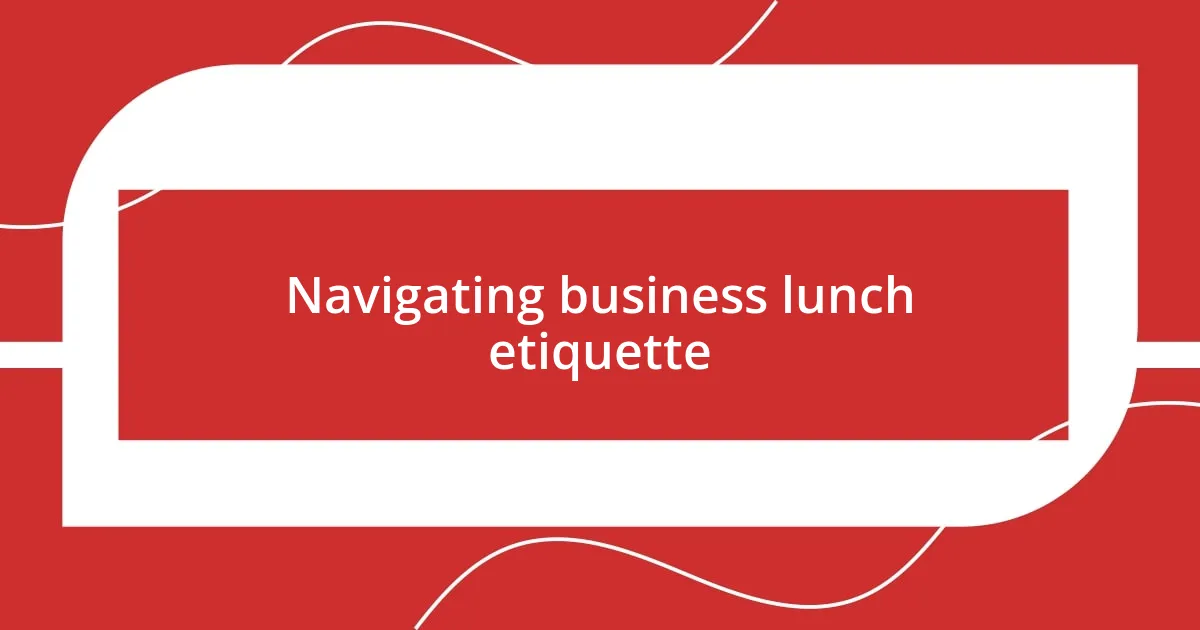
Navigating business lunch etiquette
Navigating business lunch etiquette can sometimes feel like walking a tightrope. It’s essential to strike a balance between friendliness and professionalism. During one of my early career lunches, I recalled the embarrassment of reaching for the bread and accidentally knocking over my water glass. It was a minor mishap, but it taught me the importance of being mindful of my surroundings at the table. Have you ever found yourself in a similar situation? Those moments can be great reminders to stay focused and composed.
Another crucial aspect of etiquette is the timing of your arrival. I’ve often made it a point to arrive a few minutes early, not only to settle in but also to ensure I’m ready to greet my guest warmly. Once, a delay due to traffic made me rush in just as the lunch started, and I felt flustered the entire meal. Arriving early sends a subtle message: valuing the time of others can help foster a sense of respect and professionalism.
Lastly, don’t overlook the small gestures of courtesy, like placing your napkin on your lap or waiting for everyone to be served before diving into the meal. I vividly remember a conversation where a senior colleague remarked how these seemingly minor actions speak volumes about one’s character. Have you noticed how a simple act of politeness can elevate the overall tone of a lunch? It’s a powerful way to establish rapport while creating an inviting atmosphere for deeper conversations.
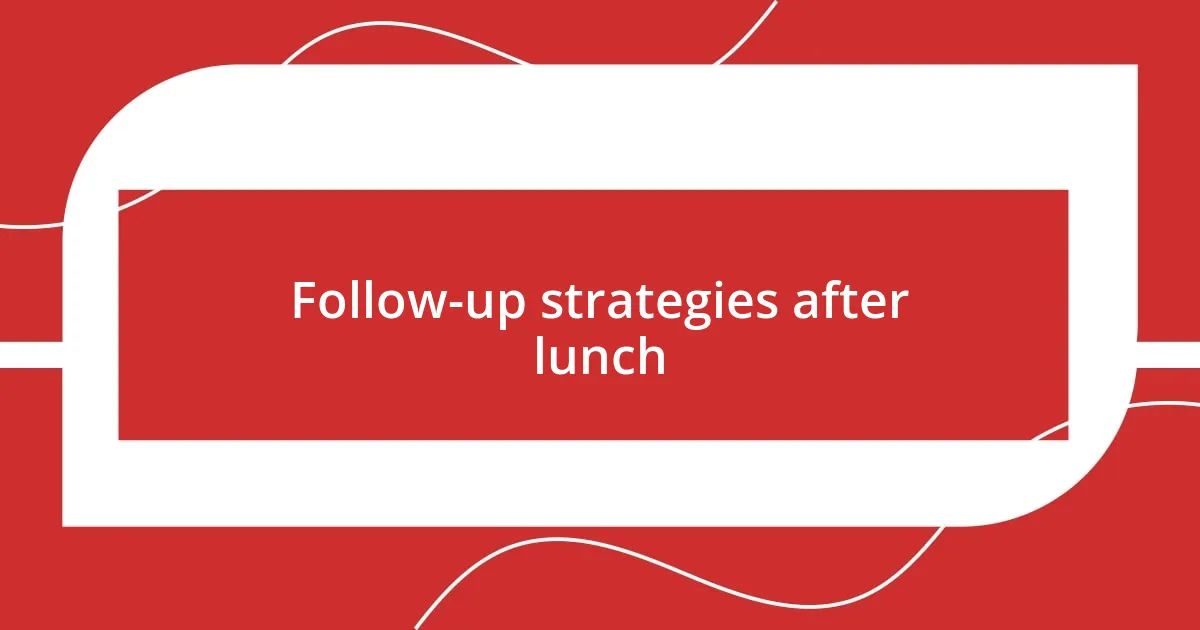
Follow-up strategies after lunch
Following up after a casual business lunch is critical for solidifying the connections you’ve made. I’ve found that sending a brief thank-you email within 24 hours can set a positive tone for future interactions. For example, I once had a productive lunch with a potential client, and a simple “Thank you for your insights; I really enjoyed our conversation about sustainability” opened the door for a further discussion about collaboration. Isn’t it interesting how a few words can leave a lasting impression?
It’s also helpful to reference specific topics from your lunch when you reach out. After a particularly enlightening discussion about tech innovations, I sent an email mentioning an article I found that aligned with our conversation. This not only showed that I was engaged but also positioned me as someone who values their thoughts. Have you ever noticed how a personal touch, like sharing relevant resources, can help solidify relationships and demonstrate commitment?
Lastly, don’t shy away from scheduling a follow-up call or meeting. I remember one instance where I suggested we connect over coffee to explore ideas further, and it was well received. This proactive approach not only demonstrates my interest but also keeps the momentum going. What about you—do you typically take the initiative to build on the conversations you’ve had? I’ve learned that these small efforts can make a substantial difference in nurturing professional relationships.










